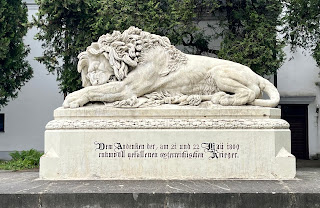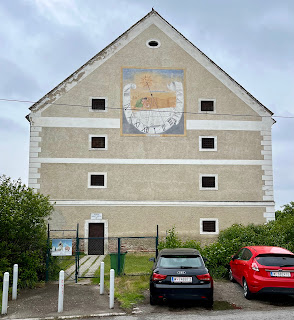I am in Vienna this week. It is not my first visit, but my wife has never been. There are lots of Balkan links, of course, but one battlefield I have never visited is Aspern-Essling. It was fought on 21-22 May 1809, during the War of the Fifth Coalition. I wasn't originally planning to go because the volunteer museums are only open on Sundays. However, the previous day's visit had worn my wife's sprained ankle, so I got a morning pass.
Aspern and Essling were two small villages on the banks of the Danube River near Vienna. Napoleon chose this area for his river crossing, led by Marshal Jean Lannes. They initially faced stiff Austrian resistance but managed to secure a foothold on the far bank. Archduke Charles responded, launching a series of fierce counterattacks to dislodge the French from their positions. The terrain, which included marshes and small villages, posed challenges for both sides. Control of critical positions, such as the villages of Aspern and Essling, shifted repeatedly during the battle. While the battle ended inconclusively, Napoleon withdrew his forces to the original side of the Danube, conceding a rare tactical defeat.
I re-read David Chandler's battle description and brought his maps. However, this was an opportunity to try the new travel guide app Guidl. Charles Esdaile has done a guided tour of this battle, and it was very useful. The app is free, but you pay to download each tour, which is £6.99. For that, you get an overview of the battle and several audio segments you can listen to at critical points on the battlefield. You will also need Google Maps to get about. In my case, by walking and bus. The app is a bit clunky, but Charles clearly explains what happened at each spot and describes the commanders engaged.
So, I caught the train to Aspern, which is over the Danube in today's Vienna suburbs. Then, I took a bus to St Martin's Church, which was on the French left flank. This was a key strong point in the battle and has several monuments, along with a small museum.
I have refought this battle a few times on the tabletop. It is an interesting tactical challenge, as the French need a bridgehead but are outnumbered at least four to one.













No comments:
Post a Comment